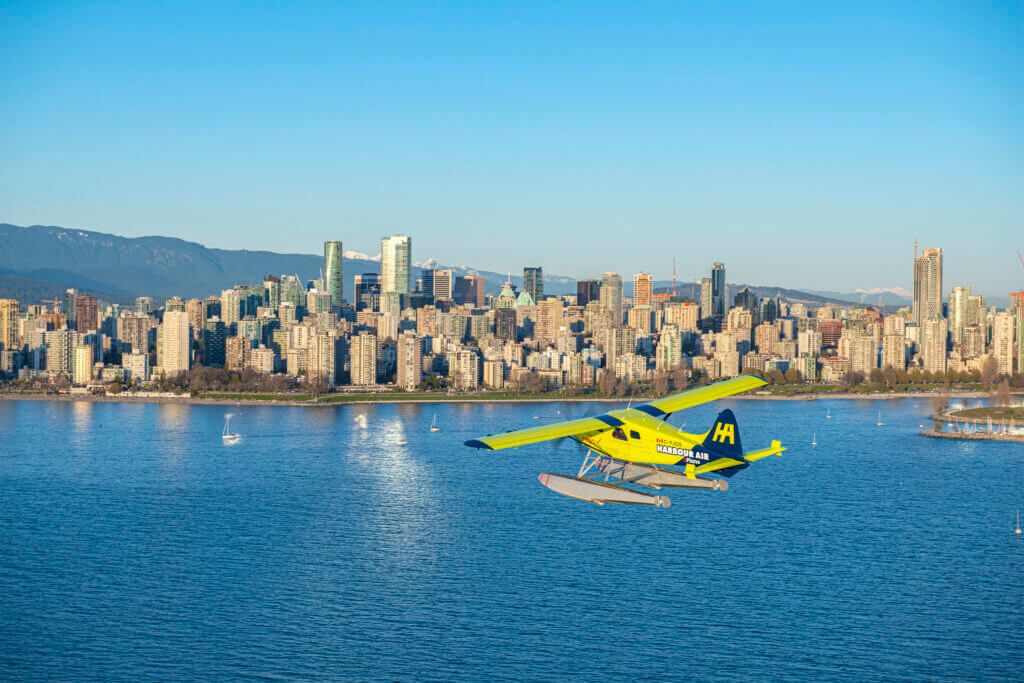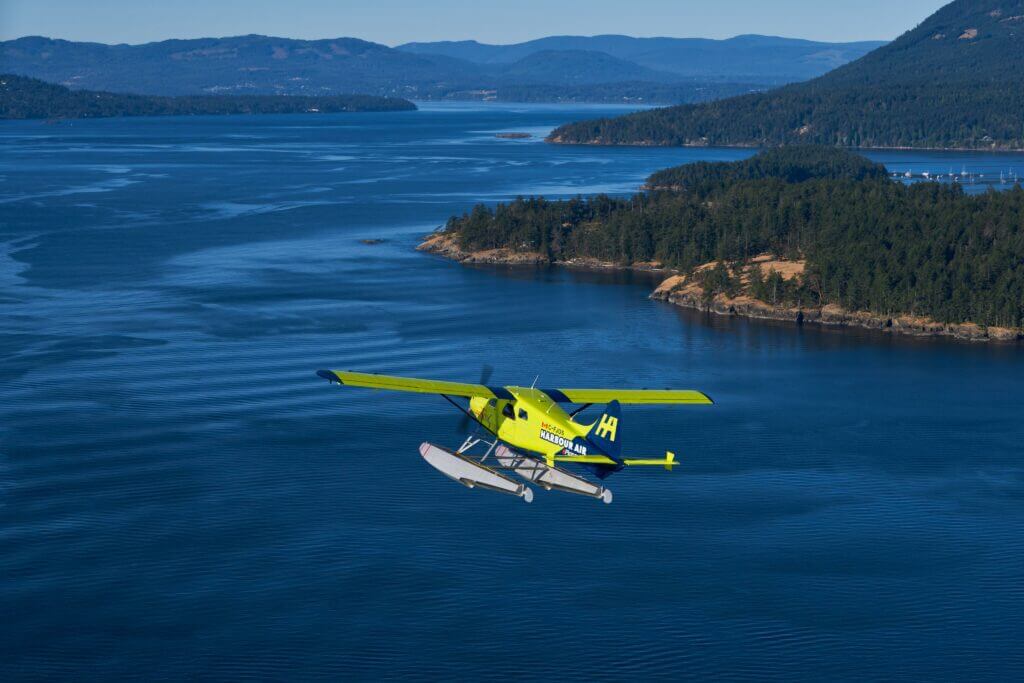Estimated reading time 8 minutes, 7 seconds.
Ahead of Earth Day 2023, Harbour Air shared that its first ePlane prototype — an electrified de Havilland DHC-2 Beaver, registered as C-FJOS — is taking off on a spring tour around British Columbia, which began with the aircraft’s first-ever trip to Downtown Vancouver.
The ePlane departed Harbour Air’s terminal on the Fraser River at YVR on April 22, and landed at the Downtown Vancouver terminal. The aircraft — which has so far completed 72 flights, logging 25 hours of flight time — will visit Salt Spring Island on May 5 to 6 to participate in the Electrify Salt Spring initiative, and will carry on to Victoria Harbour on May 7 to 8. Harbour Air noted that these stops are subject to suitable weather conditions.

The Richmond-based company shared details of the Spring ePlane Tour in its recent ePlane update, which noted that there have been “significant delays” in the certification program.
This is Harbour Air’s latest update since it announced that the ePlane successfully completed its first all-electric point-to-point test flight in August 2022. The company acknowledged that the delay in its updates has been “due to us trying to understand the issues that have arisen, and the resulting consequences to the program.”
Essentially, the technology that is being utilized on the ePlane — including new engine and battery technology — has been “outpacing the regulators,” said Harbour Air.
“As such, assumptions were made to continue developing, which can result in risk of misinterpretations from regulators,” the company continued. “One such situation occurred when an assumption was made throughout the industry that an electric engine is equivalent to a reciprocating engine when it comes to system safety analysis and single fault tolerance to a loss of power control (LOPC).

“However, we since learned that the regulators will require a system safety analysis for a single electric engine installation to meet the reliability requirements, and that it must be single fault tolerant to an LOPC event. Additionally, the regulators will also be issuing a definition of what LOPC means for an electric engine later this month, as it will be different than that of an internal combustion engine.”
Harbour Air said that after regulators spent a year determining how LOPC applies to an electric engine, the company has had to re-evaluate the engine architecture on its ePlane. That challenge has been exacerbated by the ongoing supply chain issues with electric components.
When the ePlane first flew in December 2019, it was powered by the 750-horsepower magni500 electric motor built by magniX. Harbour Air later decided to move forward with magniX’s magni350 electric propulsion unit (EPU), which has been utilized on the first prototype ePlane (C-FJOS) to conduct dozens of test flights.
Harbour Air noted last August that it was continuing to work with magniX to certify the magni350 EPU on the ePlane through a supplemental type certificate program. However, the company has confirmed that it is now changing from the magni350 EPU to the magni650 EPU “to meet the LOPC requirements at the aircraft level.”

The magni650 will be installed on a second ePlane (C-FIFQ, also a DHC-2 Beaver), which is to be utilized as the certification validation aircraft.
Harbour Air has also been working with Swiss battery storage provider H55 since April 2021, when the two companies announced a partnership to install H55’s enhanced battery system on the ePlane. (H55 announced in March 2023 that — with help from the Canadian government — it is building a manufacturing facility in Saint-Hubert, Quebec, to supply new and existing Canadian customers, including Harbour Air.)
In its April 2023 update, Harbour Air said “the entire engine and energy storage system installation [on the ePlane] is being evaluated to meet the higher reliability requirements.”
In light of these changes, the company expects that its ePlane 2.0 prototype will be built by early 2024, and will “likely fly” later that year. It also said that regulatory authorities don’t expect to reach an agreement on battery requirements until late 2024, which means the battery components on the ePlane will not likely achieve certification until 2025. As for the magni650 EPU, magniX expects to achieve certification in mid-2025, meaning the certification for installation of the EPU on the ePlane “will fall after that date.”

In the meantime, the team at Harbour Air plans to continue flying the first ePlane prototype, ePlane 1.0, to gather data on the effects on flight handling qualities and operational considerations.
“The importance of this prototype cannot be understated, as the lessons learned from this aircraft will allow us to design and build a superior product that meets certification requirements,” the company said.
“The more we can run this system and gather data, the more we can predict behavior. We’re also able to provide feedback to our partners, to help inform their design decisions moving forward.”








